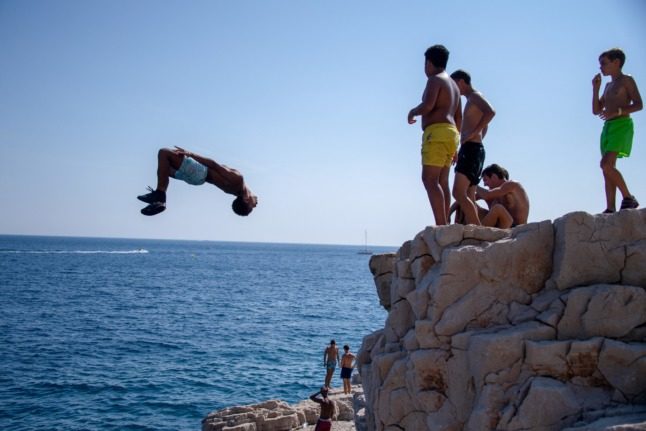French authorities have encouraged people to vacation without leaving the country this year, to boost the tourism industry, but this has also taken its toll on areas that were already struggling to cope with visitor numbers.
And a number of areas including the stunning Calanques near Marseille have already taken action to limit the damage.
On the Île de Porquerolles, a small island off the Côte d’Azur, a limit of 6,000 visitors per day has been in place since July 6th, following a joint decision by the town of Hyères, the Toulon Provence Méditerranée local authority, and the Port-Cros national park.
Around a million tourists visit the island of 12.5 square kilometres every year, and last August authorities observed up to 12,000 visitors per day.
“The crowds over twenty or so days were so large that it was impossible to reconcile tourism with the preservation of the Port-Cros national park,” the local council stated.
‼️Les réservations pour les navettes de la TLV vers Porquerolles sont maintenant obligatoires ! C’est par ici : https://t.co/p020lh88Yl pic.twitter.com/XDjEXmHG62
— Porquerolles🌴France (@ileporquerolles) July 6, 2021
Authorities are working with boat operators to regulate numbers, with a new online system allowing tourists to reserve their journey online.
Another area which has come under increasing pressure from tourists over the years is the Calanques, the stretch of wild, rugged coastline on the outskirts of Marseille.
READ ALSO French tourism lost €61 billion in 2020
This is particularly the case for the Sugiton calanque, which the Calanques national park website describes as a “victim of its success”. From February 2022, visitors will have to reserve their place online, although this will only apply to the area around the beach, not the surrounding cliffs and hiking paths.
“At the height of summer, we can reach more than 2,000 people at Sugiton at the same time, with a density of almost six people per square metre of beach,” François Bland, director of the national park told France Bleu.
“The coastal flora is disappearing, there’s a very strong erosion soil erosion, if it continues we’ll have no more soil, no more plants, we’ll have a calanque which is totally different with only rocks.”
Reservations will be free, and open up to four weeks ahead of time, the park’s directors announced on July 13th, calling Sugiton the “most vulnerable” of the calanques.
The MesCalanques app already informs visitors of how busy different sites are in real time, and warns people to stay away when an area is particularly crowded.
READ ALSO Eiffel Tower: 13 things you didn’t know about Paris’ Iron Lady
Other areas could soon follow suit and impose their own limits on visitor numbers. The new climate law passed by parliament earlier this month gives mayors more powers to regulate tourism.
It stipulates: “The access and circulation of people, vehicles and domestic animals in protected areas […] can be regulated or banned by decree, from the moment this access is likely to compromise either their protection or improvement […] or the protection of animal or plant species.”
The increasing number of French people spending their summer holidays in the country has also brought new categories of visitors, who are less used to spending time in nature. At the picturesque Lauvitel lake in the Isère département in south-eastern France, park rangers recorded double the number of violations – from littering to lighting fires, to stealing equipment – in the summer of 2020 compared to the previous year, according to AFP.
This year, the park has focused on “better communicating” the essentials, such as wearing appropriate shoes and not lighting fires.



 Please whitelist us to continue reading.
Please whitelist us to continue reading.
Member comments